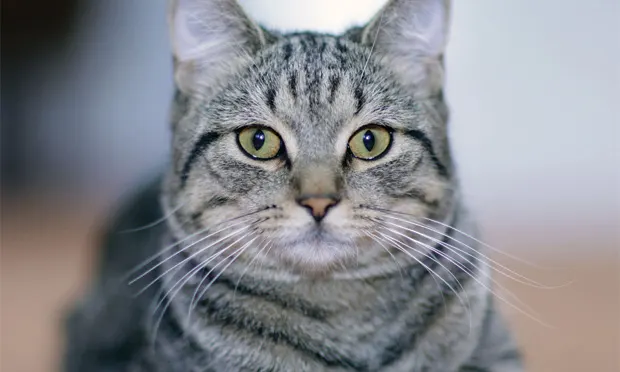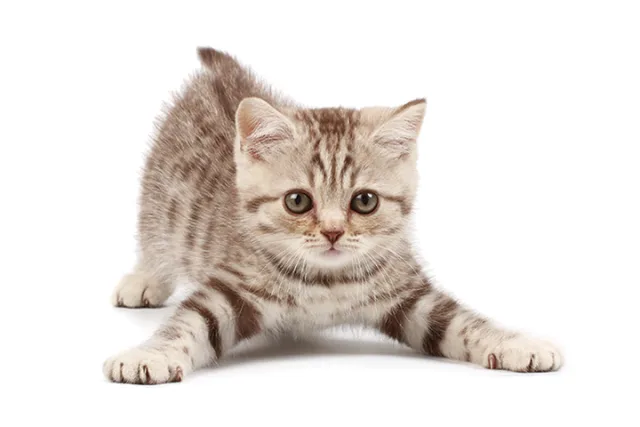Top 5 Feline Environmental Needs
Glenn A. Olah, DVM, PhD, DABVP (Feline), Winn Feline Foundation, Albuquerque Cat Clinic, Albuquerque, New Mexico

Although cats have long been housed indoors to protect them from the dangers of the outdoor environment, such as infectious agents and physical trauma, this is a fairly recent cultural development in North America. In fact, indoor “captivity” can be hazardous to cats if their environmental needs are not met.
The following list is not all-inclusive, but examines 5 general ways to enrich an indoor cat's environment:
1. Enhance Basic Resources
Most clients provide basic resources (eg, food, fresh water, a clean toileting area, a scratching post, toys), but they do not always interpret and deliver these resources in an ideal manner.
Food, for example, while usually plentiful or even excessive, is commonly presented in an unnatural form (eg, dry kibble) and served in a bowl, neither of which encourages natural feeding behaviors such as locating, capturing, playing with, killing, and eating prey. Instead, clients should hide small quantities of kibble in multiple locations; feed at short, regular intervals; and provide puzzle feeders to mimic natural mental stimulation. Clients can also simulate the size of a bird or mouse with food and require cats to locate and interact with the food as if capturing prey.
Ideally, each household cat has his or her own station for food and water; however, variations may be acceptable depending on the cats’ individual and social needs.
2. Provide Ample Physical Space
Domestic cats evolved from the African wildcat (Felis lybica), a crepuscular predator that was likely prey for other species. Pet cats have retained many adaptive behaviors that require a 3-dimensional territory for hunting, hiding (during hunting and avoiding predation), mating, and resting.
An indoor environment should provide resting, sleeping, elimination, and hiding areas, as well as space for physical activity, and vertical space and perches where the cat can monitor his or her environment. Safe areas allow cats to avoid conflict.
3. Offer Outlets for Normal Behavior
Most indoor cats live in an environment that is stable, but static and monotonous, with no outlets for expressing their innate behaviors (or ones that are unacceptable to the owner), which can lead to problem behaviors. Recognizing normal behavior is crucial before evaluating whether issues are associated with the cat’s environment.
Normal feline behaviors include:
Eating & drinking
Eliminating
Exploring (including investigative chewing)
Hunting (predation and play)
Resting
Scratching
Sleeping
Inadequate environments can cause or exacerbate stress or problem behaviors such as hyperactivity, destructive scratching and chewing, excessive grooming, attention seeking, compulsive disorders, and aggression. To appropriately meet their behavior needs, cats should have clean litter boxes, stable scratching posts, cat grass, toys to simulate predatory behavior, and spaces to perch, rest, and navigate the home.
4. Respect Social Interaction Limits
Cats can be quite flexible in their social structure. With sufficient resources, feral cats can survive alone or in groups, and this trait is adapted in domesticated indoor cats. Their social system includes all humans and pets that share their home space; therefore, social stimulation (both positive and negative) can be derived from interactions with other cats and other species.
Clients should learn and respect their cat’s personal preferences to improve and strengthen the bond with their pet.
The importance of social interactions and other experiences at an early age (ideally, 2–9 weeks of age for human interaction; up to 16 weeks of age for other social interactions, including cat–to–cat) cannot be overemphasized, because the number and type of inter- and intraspecies interactions during this time shapes long-term social preferences. Along with genetics, this period will affect how much and what forms of human contact (eg, petting, grooming, playing, talking, being carried, sitting on a person’s lap) a cat will like or tolerate.
Clients should learn and respect their cat’s personal preferences to improve and strengthen the bond with their pet. Ignoring or not recognizing these preferences can lead to problems such as stress-related diseases, inappropriate elimination, or aggression.
5. Facilitate Sensory Stimulation
Cats evolved as ambush hunters, locating prey using sensitive vision, hearing, and smell. Feline vision is optimized for crepuscular hunting with a minimum light threshold up to 7 times lower than humans. Cats’ auditory range is similar to that of humans at low frequencies, but because their frequency range extends to approximately 65 kHz, cats can hear subtle movements. Most importantly, cats depend on chemical information from their olfactory senses to assess their environment and maximize their security and comfort. If indoor cats sense threatening pheromones, or if they cannot express their sensory signals (eg, scent marking), stress-related illnesses and problematic behaviors such as inappropriate elimination or scratching can occur.
Clients can provide visual stimulation by allowing indoor cats access to windowsills or “window seats” to watch outdoor activities. However, carefully assess what they can see so that they are not distressed by other cats or dogs. Similarly, videos of birds, fish, and insects can provide both visual and auditory stimulation. Catnip (Nepeta cataria) can provide olfactory stimulation, although not all cats respond because of a genetic predisposition to its effects. Synthetic feline pheromone sprays can be used when introducing new items into the house.

Conclusion
Veterinary team members not only are charged with advising clients on medical issues and preventive healthcare, but also with educating them about basic ways to enrich their indoor cat’s environmental and social needs.
This article originally appeared in the September 2014 issue of Veterinary Team Brief.